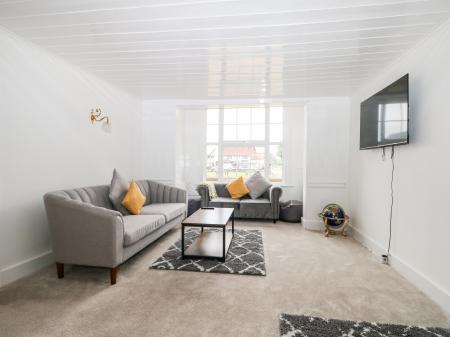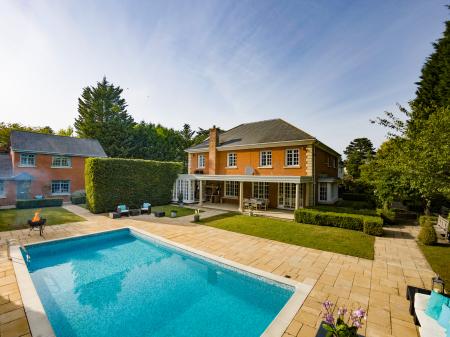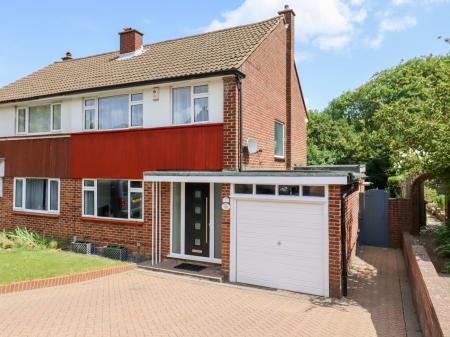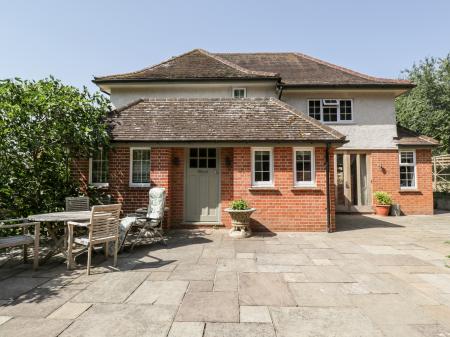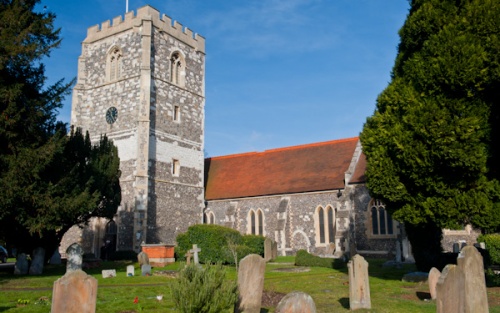
History of Bray Church
A church was mentioned at Bray in the Domesday Book of 1086, but that early church was located elsewhere, possibly on the site of a Roman cemetery at Builder's Well, a mile to the south west of the current site.
A legend associated with that Saxon church says that while it was being built, the work done by workmen each day was mysteriously destroyed by devils overnight. The workmen took this as a sign that they should move the building site elsewhere.
There are similar stories attached to churches all across Britain however - one wonders how many of the tales have any foundation in actual events! An animal carving from the Saxon church is set into the wall to the left of the south porch.
The current church of St Michael was begun around 1293. The traditional story, repeated in the official church guide, is that the patroness was Queen Margaret, second wife of Edward I. The only trouble with this version is that Margaret did not marry Edward until 1299, though a marriage was agreed in 1294.

Details aside, the royal connection and proximity to Windsor, a few miles down the Thames, meant that Bray's new church was built in a very grand manner; so grand, in fact, that the parishioners objected to the cost, and the churchwardens had to appeal to royal bailiffs for help with funding.
Shortly after construction was begun, Edward I granted Bray to the Abbey of Cirencester, then around 1400 the embattled west tower was added. The tower had its moment in the spotlight in the 1990s when the television detective Inspector Morse investigated the case of a man who fell to an untimely death from the top of the tower.
When Henry VIII dissolved the monasteries Bray reverted to the crown and was later granted to Oxford. During the Commonwealth Oliver Cromwell's chaplain, Hezekiah Woodward, was named vicar of Bray, and the parishioners, fearful of Cromwellian destruction, took down the gilded coat of arms of James I and hid them until the Restoration. This marvellous coat of arms is now set over the screen to All Saints Chapel in the south aisle.
One final famous name associated with Bray was James Austen Leigh, nephew of novelist Jane Austen. Leigh was named vicar in 1853 and was responsible for restoring the medieval church. He is remembered in a large commemorative engraving over the south doorway arch.
Early Industrial Action?
In 1876 the bell-ringers of Bray walked out on what can only be described as a strike. They were protesting against an attempt to replace human-powered bell-ringing with an automated bell-ringing device.
The churchyard can be approached through an arch beneath the mid-15th century Lich Gate cottage (dated 1448).
Around the church interior
One of the first things you notice on entering the church is the small carved heads that project from the columns separating the nave and aisles. There are 28 of these heads, each unique. These are not the original medieval heads, but faithful reproductions of medieval originals with the addition of various Victorian notables, including James Leigh and Bishop Samuel Wilberforce of Oxford.

The most impressive feature of St Michael's, however, is the large number of memorial brasses. Many of these have been taken up from the floor and set upon boards against walls. Notable brasses include:
1. The Judge's Brass, by the west door, showing Sir William Laken (1475), Justice of the King's Bench.
2. Foxley Bracket Brass (1378) - This very large and impressive brass is mounted on its original slab, and shows Sir John Foxley and his two wives, Maud, and Joan. Set against the north wall opposite the south door.
3. The Page Brass (1610) - set on a pillar of the chancel arch near the organ, this shows Arthur Page of Water Oakley and his wife Sesseley.
4. Kelke Brass (1593) - set in the south-east corner of All Saints Chapel, this commemorated Clement Kelke, 'a cytycen of London, merchant ventver and free of the Haberdashers'.
These are just some of the more notable examples of brasses - there are many more.
On the north wall of the Norris Chapel is a striking monument to William Norreys (Norris) (d. 1591). This is made largely of black marble. Norreys was a member of the Order of the Garter and Usher of the Black Rod. Even more impressive is the early 17th century alabaster Goddard Monument on the north wall of the Sanctuary. This shows William Goddard, founder of Jesus Hospital in Bray, with his wife, Joan Maunsell.
One final note
Though it is not obvious from the church website, St Michael's is apparently not generally open during the day. We were very fortunate to find the church open because volunteers were preparing it for a forthcoming service, and they kindly let us wander about. One volunteer told us that the church was generally locked due to concerns over vandalism. So please, be warned; it may be best to time a visit to coincide with service times!









 We've 'tagged' this attraction information to help you find related historic attractions and learn more about major time periods mentioned.
We've 'tagged' this attraction information to help you find related historic attractions and learn more about major time periods mentioned.